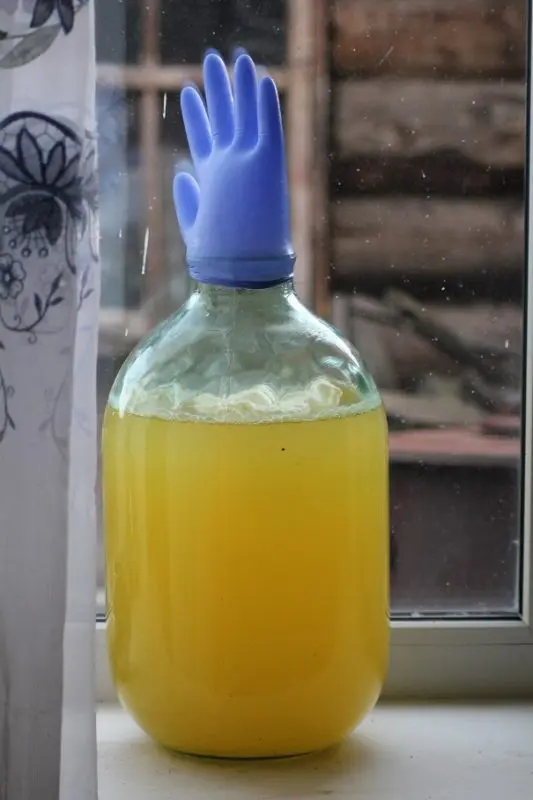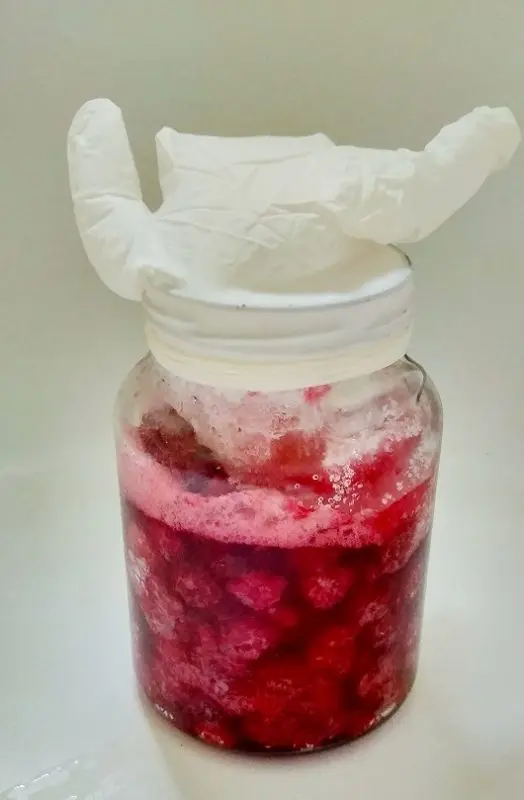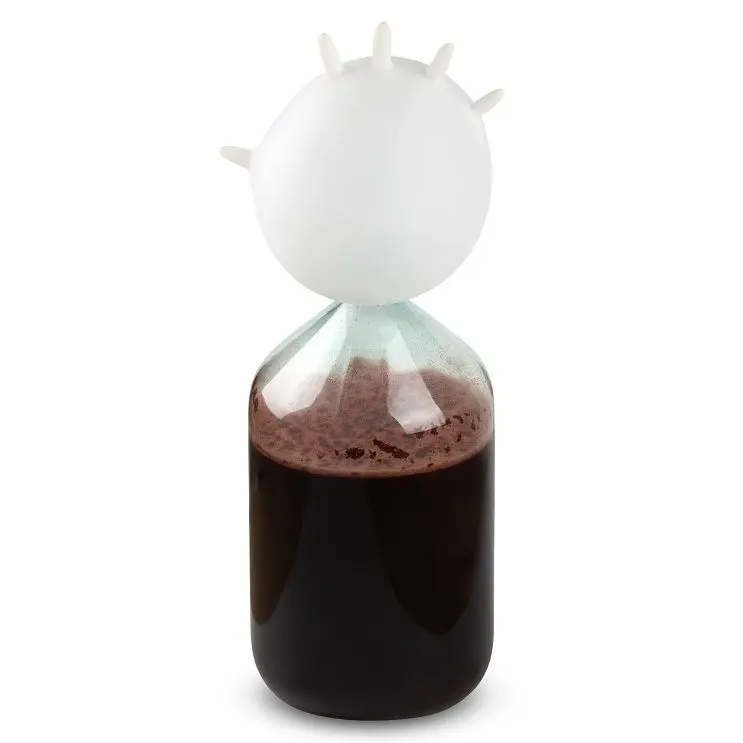Contents
Among professional winemakers and experienced amateurs, this method of removing carbon dioxide and limiting the flow of oxygen is considered primitive, but beginners like the ease of implementation. A rubber medical glove instead of a water seal works no worse than other methods and is suitable not only for wine, but also for any mash, therefore it has a right to exist, especially for small batches of must.
Theory
During fermentation, yeast converts sugar or fructose into carbon dioxide and ethyl alcohol. To prevent excess pressure in the container, which can lead to an explosion, carbon dioxide must be removed outside. However, at the same time, prolonged contact of wine with oxygen and the environment should not be allowed, otherwise infection with third-party microorganisms (for example, mold) will occur or the finished wine will turn sour – when air enters, bacteria are activated that process alcohol into acid.
At the same time, a special device, a water seal, allows you to remove carbon dioxide and prevent air from getting inside. There are different designs of water locks, both factory-made and home-made, but at home, along with the classic one (a tube from a fermentation tank dipped into a jar of water), an ordinary medical glove is used.
Benefits of putting a glove on a wine can:
- accessibility and simplicity – gloves are sold in any pharmacy, and even women can build a structure, you do not need to solder, drill and glue anything;
- reliability – the glove works no worse than other water locks;
- when properly installed, it is an indicator of fermentation – the glove is inflated, which means that the wine is actively fermenting, it has dropped – the process is over or something is wrong.
Disadvantages:
- low reliability – the glove often flies and breaks, especially on large containers;
- not suitable for the narrow neck of bottles – it is very difficult to fix the glove on the narrow neck;
- unpleasant odor – since carbon dioxide is not released into the water, but into the environment, with poor ventilation in the room, a specific smell of fermentation may be present.
How to install a glove on wine
1. Prepare a clean medical glove: check the absence of a “rubber” or “medicinal” smell and the integrity of the material.
Attention! Only a medical glove is suitable, household ones usually have an unpleasant smell of rubber, this smell is transferred to the wine and cannot be eliminated.
2. With a thin sewing or needle from a syringe, make 1-5 punctures in the extreme phalanges of the fingers of the glove. The number of holes depends on the volume of the must: 1-2 liters – 1 puncture, 3-25 liters – 1-2 punctures, more than 25 liters – 3-5 holes.
3. Put a glove on the neck of the fermenter. For secure fastening, tie the neck with a glove with an elastic band, a thick thread, or rewind with a wide adhesive tape (optimal for sealing). Transfer the wine to suitable conditions for fermentation.

4. After 4-12 hours after installation, the glove should at least slightly inflate, which means that the fermentation is normal and the design is tight.
The reasons why the glove does not inflate on wine are described in a separate article https://alcofan.com/chto-delat-esli-domashnee-vino-perestalo-brodit-ne-zabrodilo-vovse.html.
5. At least once a day, check that the glove has not torn or fallen off. If necessary, replace or reattach the old one.
6. When the glove deflates (fermentation is over), remove the wine from the sediment.


Questions and problem solving
Do I need to pierce a hole in a glove?
Depends on the volume of the container. In a liter of fermenting wort, little carbon dioxide will be released, and in 3 or more liters – quite a lot. It is problematic to securely fasten the glove to a container larger than 20-25 liters.
If the wort is less than 2 liters, you can not pierce a hole or limit yourself to one puncture. With a volume of 3-25 liters, at least 1-2 punctures are required, otherwise the glove will fly off or burst. If the must is more than 25 liters, 3-5 punctures are made and the integrity of the glove is checked at least once a day.
Will air get in through the holes?
During fermentation, the pressure inside the tank is higher than atmospheric pressure, as a result, carbon dioxide pushes air out from the inside, preventing contact with the wort. After fermentation is complete, the material of the glove will almost completely close the hole (if the puncture is made with a needle). The amount of oxygen permeated will be minimal and will not affect the wine in any way.
What to do if the glove is very inflated
Take off the glove (fermentation is active, so even being open for a couple of minutes, the wine will not suffer), make a few punctures and put it back on the container, sealing the connection.

Why did the glove get pulled in
This situation occurs due to the pressure difference between the tank and the environment. Possible causes of pressure drop:
- the design is not tight and too much air gets inside – it is more reliable to fasten the glove;
- sudden temperature changes, for example, day and night – move the container to a room with a stable temperature;
- wine does not ferment – find and eliminate the problem that interferes with fermentation;
- wine diseases – a retracted glove may indicate the activation of mold or other pathogenic microorganisms, must treatment is required;
- fermentation is over – you need to drain the wine from the sediment.
What to do if the glove on the wine burst or flew off
Replace with a new one. This usually happens during active fermentation due to overpressure, so if the wine has been open (without a glove) for less than a day, it’s okay, since the carbon dioxide released will prevent oxygen from contacting the must, just follow the recipe.
That is why it is so important to periodically check the integrity of the glove.









